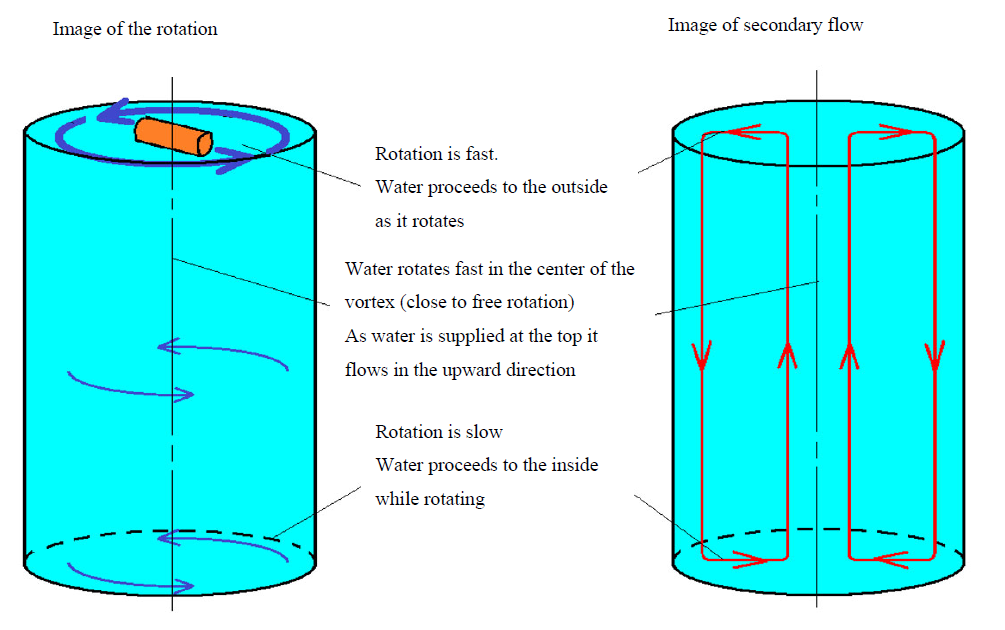Vortex generated by a swirl at the top
Let's take a look!
What type of experiment is this?

Experimental procedure and explanation:
- We place the stirrer at the top of the tank to swirl the water.
- The torn tissue paper is placed in the water to observe the flow of water. The tissue paper then moves up along the center of the vortex. This shows that the flow is facing upward at the center of the vortex. We can also see that the flow is rotating faster near the center than at the periphery (a flow similar to a free vortex).
- At the top of the tank, the water is forced to rotate faster by the rotor. Therefore, the apparent force acting on the water is greater, causing the water to flow in the outward direction while rotating.
- To replenish this displaced water, water moves from the bottom. Thus, an upward flow occurs at the centerline of the vortex, moving outward at the top, descending along the inner surface of the container, and creating a circulating flow that moves inward near the bottom. This circulating flow will be a component of the flow perpendicular to the swirling flow (called the main flow, because it is the main actor in this phenomenon). This flow component perpendicular to the main flow is called secondary flow.
- For a vortex to which a swirl is applied at the top, we can observe that an upward secondary flow occurs on the centerline of the vortex.
- As previously published in " Collecting Tea Leaves ", a similar secondary flow occurred and tea leaves were collected inside.
- This experimental video was produced with the support of JSPS Grant-in-Aid for Scientific Research 18K03956.
| [Keywords] | Vortex, secondary flow |
| [Related items] | Vortex generated by a swirl at the bottom , Collecting Tea Leaves, Centrifugal Force |
| [Reference] | Ryozo Ishiwata, "The Wonder of Flow," Kodansha Blue Backs, p. 52-61. |
Last Update:1.31.2025

